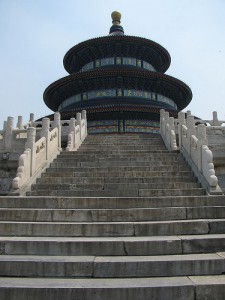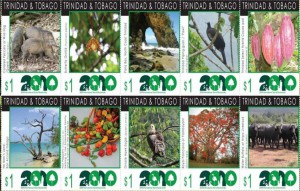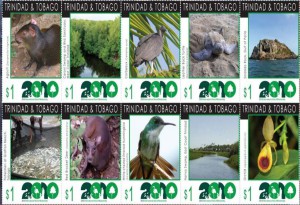- Mangofest in Miami. You missed it.
- Untreated seed saves bees? (Can someone please explain how this worked. If it worked.)
- Cary Fowler in the spotlight.
- IPCC envy? The Economist’s report on the Global Business of Biodiversity Symposium.
- “In seed time learn, in harvest time teach, in winter enjoy.”
- Ag experts descend on Ouagadougou for FARAweek. Hope springs eternal.
- Perennial sorghum?
Livestock reverse desertification
There’s something delicious about received wisdom being overturned. For example, you’ll hear it said, categorically, that livestock turn fragile landscapes into desert; they eat the plants binding the soil, and their hooves cut up the surface and promote erosion. But it ain’t necessarily so.
Operation Hope, a Zimbabwean NGO and winners of $100,000 Grand Prize in the Buckminster Fuller Challenge, has
[T]ransformed 6,500 acres of of parched and degraded grasslands in Zimbabwe into lush pastures replete with ponds and flowing streams – even during periods of drought.
The quote is from a write-up in Seed magazine, which gives lots of details of the story. In essence, the key to livestock and grasslands is time, not numbers. If animals are on the land too long, their hooves do indeed powder the soil and they do overgraze. But if they are free to move on, or are moved by herders, moderate trampling allows rain to percolate into the soil, rather than run off and cause erosion. It also improves contact between seeds and soil, promoting germination. And dung and urine return plant matter to the soil to increase fertility and sequester more carbon, without becoming pollutants.
Operation Hope grazes animals in one spot for a maximum of three days, and they do not return for at least nine months, mimicking the natural movements of large herbivores on the savannah. At night they are protected from predators in portable kraals, which are also mobile to prevent a build-up of dung and urine. The effects are impressive. (“Animal-treated” field on the right, conventionally managed field on the left. Image courtesy Buckminster Fuller Institute”)
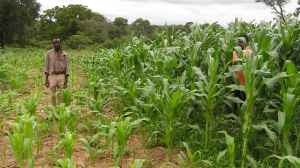
What’s interesting, and this is explored in much more detail in the Seed article, is that this kind of ecosystem thinking, which requires human knowledge and ingenuity to tackle complex problems, could have applications well beyond range management. Allan Savory, the scientist behind Operation Hope and the Africa Centre for Holistic Management, is hard on the Green Revolution.
“We posit the necessity of a new ‘Brown Revolution’, based on the regeneration of covered, organically rich, biologically thriving soil, and brought to fruition via millions of human beings returning to the land and the production of food.”
Of course, that’s hard work. But it is also surely much more interesting and fulfilling.
Sea buckthorn becoming a success in a land with no sea
The name of the game in Mongolian agriculture is diversification. And one of the things researchers at PSARTI, the Plant Science Research and Training Institute in Darkhan, and others are looking at is a shrubby berry called sea buckthorn (Hippophae rhamnoides) with some interesting nutritional properties. They have put together a small germplasm collection of local and introduced material and are doing agronomic trials of various kinds, trying to find the best varieties for different purposes. In fact, the plant has a pretty long and rich history in Mongolia:
It is said that Genghis Khan, the Mongol conqueror, who established one of the largest empires from China to Eastern Europe in the 13th century, relied on three treasures: well organized armies, strict discipline and Seabuckthorn. Seabuckthorn berries and seed oil made Genghis Khan’s soldiers stronger than his enemies.
There are already some products on the market. Like this delicious icecream, called Ice Doctor.
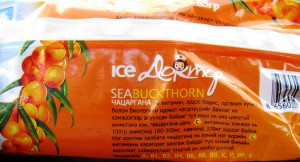
The natural history museum in downtown Ulaanbaatar has a display featuring a number of locally-made products — a couple of different oils and “globules” — along with a somewhat threadbare diorama.
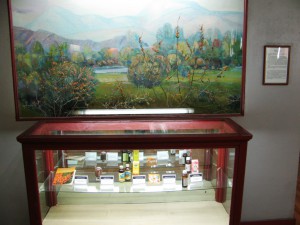
I guess commercialization still has some way to go, but a start has been made. Another wild species with some commercial potential may be strawberries.
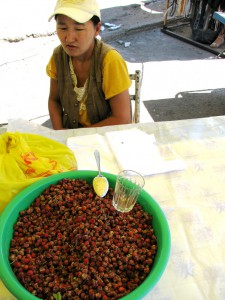
Wild Allium of various kinds is also sold in the market.
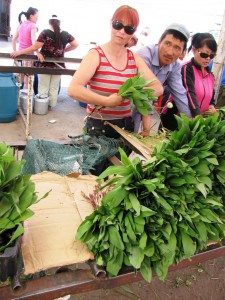
Agricultural biodiversity stamped on
Those limelight-hogging publicity mavens at the Convention on Biological Diversity have done it again. A massive press release celebrates the fact that Syria recently became the 12th country to issue a set of postage stamps to celebrate the International Year of Biodiversity. Ahmed Djoghlaf, Executive Secretary to the CBD had this to say:
I want to pay tribute to the countries that have made the effort to design and issue beautiful stamps as a way of reminding people of the importance and irreplaceable nature of the biodiversity of our world … Young people and adults alike can enjoy and take pleasure in these stamps, which will become permanent and memorable collector’s items.
And yes, you’re dead right, we’re about to get on our high horse again and moan about the (lack of) agricultural content of these stamps. I took a close look at the pictures the CBD sent out, and as usual there are almost no crops or livestock there. India’s features rice farmers — and an owl. Belarus has a couple of fish, which may or may not be edible, although I think Portugal’s are. Hong Kong’s and Singapore’s may feature edible tree fruits, but then again they may not; who can tell? The UK has a couple of whales (the dormouse is not the edible one) but given the UK’s stance on whales, it’s pretty safe to say they didn’t have food in mind.
Let’s hear it, then, for Trinidad and Tobago, which did Select Hybrid Cacao, hot pepper diversity, water buffalo, agouti, leatherback turtles and fishermen, plus a couple of productive ecosystems.
Another Hall of Prayer for Good Harvests
So you could say that the National Genebank of China which I talked about in the previous post is a sort of modern equivalent of this building, the Hall of Prayer for Good Harvests in Bejing‘s Temple of Heaven complex. No word on whether there are landrace seeds embedded within it somewhere, as in that statue in Ulaanbaatar.
